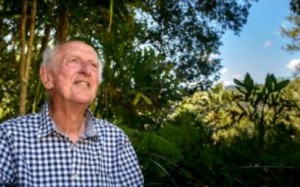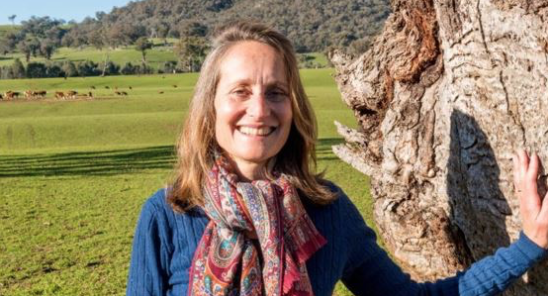Landholders and conservation agreements
Tony Parkes – Restoration in the Big Scrub in northern NSW
Tony’s story starts in 1986 with his family purchasing an eight-hectare block that was part of a 42-hectare degraded ex-dairy farm at Binna Burra, north eastern NSW. Tony was living in Sydney at the time and was planning early retirement from a long career in corporate finance. The purchase of the property was the tangible expression of a sea change dream. The dream turned to reality three years later when he moved into a new house on the property, which was once covered by lush rainforest of the Big Scrub.
The farm was once part of the Big Scrub, the largest area of lowland subtropical rainforest in Australia. Most of the Big Scrub has been cleared, leaving 60 significant remnants with incredibly rich and endangered biodiversity. Thus, began an incredible journey that over the ensuing twenty-one years has involved the planting of more than 35,000 trees on his property and the rehabilitation of three small remnant patch of Big Scrub. With the assistance of various grants Tony was able to restore rainforest on 15 hectares or 35 percent of the property, including two kilometres of riparian zone.
Today, the restored rainforest is protected by a conservation agreement with the NSW Minister for the Environment.

Image: Tony Parkes
Source: Big Scrub Landcare
Clare Cannon - Woomargama Station’s land management approach
Clare Cannon, the owner of one of Australia's oldest pastoral stations believes a recent decision to protect a third of her property with a private land conservation agreement will eventually increase the value of the farm and its produce.
Clare’s Farm, Woomargama produces grass fed beef from a 1,000 head herd of poll Hereford cattle and runs about 7,500 fine wool merino sheep. Clare also manages a third of her property under a conservation agreement with a covenant via a farm management plan. The farm management plan focuses on regenerating grassy woodlands an endangered ecological community by removing grazing in protected areas during summer whilst continuing grazing throughout the remainder of the year to help control exotic plants and weeds.
Clare believes the agreement provides a happy medium where it works for both biodiversity and farming and discovered that running a profitable business can co-exist with environmental sustainability. For example, during a wool sale it was noted that Clare’s merinos had grazed on the protected land and wool buyers at the sale found this a point of difference. Clare discovered that the provenance of the wool and the environmental aspects of wool production is very important in Europe and sees a conservation agreement is a positive feature adding to her brand, rather than detracting from it.
Clare is discovering that some of the other on farm economic benefits of the management plan include the impact of more bird life on insect populations, more tree cover protecting livestock from extreme weather, reduced wind exposure, lower wind shear, reduced loss of lambs, fewer blowflies, more insectivorous birds, more diverse pastures and deeper rooted perennial grasses.
Clare’s story was also featured on ABC Landline on the 25th February 2017, you can hear her story at the following link: abc.net.au/tv/programs/landline

Image: Clare Cannon on her Property at Woomargama, Holbrook.
Source: Scott Hartvigsen (Border Mail)
